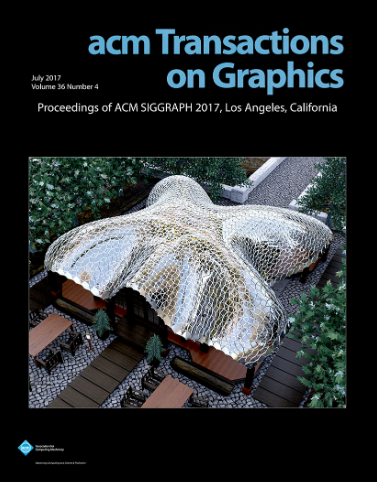MoFlow: Motion-Guided Flows for Recurrent Rendered Frame Prediction
IF 9.5
1区 计算机科学
Q1 COMPUTER SCIENCE, SOFTWARE ENGINEERING
引用次数: 0
Abstract
Rendering realistic images in real-time on high-frame-rate display devices poses considerable challenges, even with advanced graphics cards. This stimulates a demand for frame prediction technologies to boost frame rates. The key to these algorithms is to exploit spatiotemporal coherence by warping rendered pixels with motion representations. However, existing motion estimation methods can suffer from low precision, high overhead, and incomplete support for visual effects. In this article, we present a rendered frame prediction framework with a novel motion representation, dubbedMoFlow:用于循环渲染帧预测的运动引导流
在高帧率显示设备上实时呈现逼真的图像带来了相当大的挑战,即使使用先进的图形卡。这刺激了对帧预测技术的需求,以提高帧速率。这些算法的关键是通过扭曲具有运动表示的渲染像素来利用时空相干性。然而,现有的运动估计方法存在精度低、开销大、对视觉效果支持不全等问题。在本文中,我们提出了一种具有新颖运动表示的渲染帧预测框架,称为运动引导流(MoFlow),旨在克服光流和运动矢量的固有限制,并精确捕获复杂几何形状,照明和半透明物体的动态。值得注意的是,我们使用循环特征流网络构建MoFlows,该网络专门用于从多个帧中学习潜在的运动特征。大量的实验结果表明,与最先进的方法相比,我们的方法在更低的延迟下实现了更好的视觉质量和时间稳定性。循环机制允许我们的方法预测单个或多个连续帧,将帧率提高2倍以上。所提出的方法代表了一个灵活的管道,以满足各种图形应用程序、设备和场景的需求。
本文章由计算机程序翻译,如有差异,请以英文原文为准。
求助全文
约1分钟内获得全文
求助全文
来源期刊

ACM Transactions on Graphics
工程技术-计算机:软件工程
CiteScore
14.30
自引率
25.80%
发文量
193
审稿时长
12 months
期刊介绍:
ACM Transactions on Graphics (TOG) is a peer-reviewed scientific journal that aims to disseminate the latest findings of note in the field of computer graphics. It has been published since 1982 by the Association for Computing Machinery. Starting in 2003, all papers accepted for presentation at the annual SIGGRAPH conference are printed in a special summer issue of the journal.
 求助内容:
求助内容: 应助结果提醒方式:
应助结果提醒方式:


